Cotton count 20s-36s | Built 1793 Demolished 1892 | |
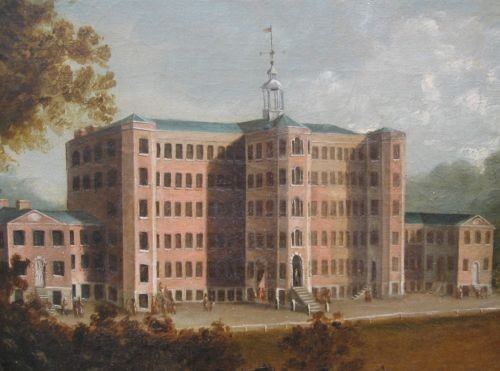 | ||
Employees 550 (60 Parish apprentices) | ||
Mellor mill waterloo tunnel exploration
Mellor Mill, also known as Bottom's Mill, was a six-story cotton mill in Marple, Greater Manchester built by Samuel Oldknow in 1793.
Contents
- Mellor mill waterloo tunnel exploration
- Location
- History
- Parish apprentices
- Architecture
- Power
- Equipment
- References
Location
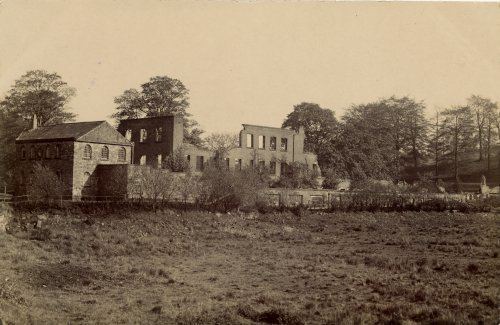
The mill was built by the River Goyt in the parishes of Mellor and Marple in what is now the Greater Manchester area. The River Goyt was the boundary between Derbyshire and Cheshire. To provide water for the two wheels the Goyt was diverted and canals and reservoirs built. The water reservoirs for the mill, are now called the Roman Lakes. The foundations of the mill remain though nothing can be seen above ground.
History
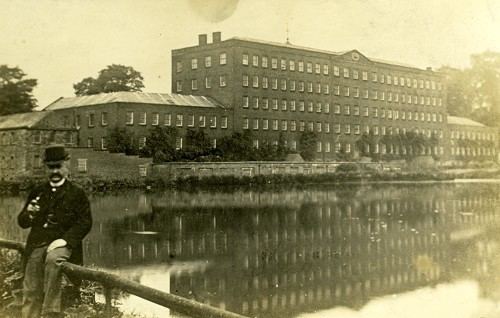
Samuel Oldknow was a significant businessman and mill owner in Mellor during the Industrial Revolution. He had business interests in Stockport, Heaton Mersey and Anderton. In 1787 started to amass land in Mellor and Marple, buying in three adjoining estates. He commenced building the mill, financing it on credit secured on his reputation and the other mills. He was underwritten by loans from Arkwright, and attempted to form a partnership with Peter Drinkwater being engaged to his daughter. The financial crisis of 1792-1793 hit him badly and he sold off his other interests concentrating on completing this mill. The engagement was broken off, and he remained in debt to Arkwright.
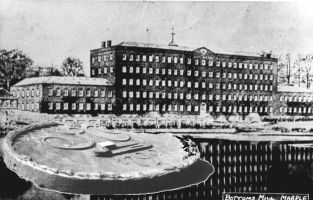
He finished the mill in 1795, but was about to declare bankruptcy in 1797. Arkwright intervened and formed a partnership with him, absorbing the debt leaving Oldknow to manage the mill and the estate. When the partnership dissolved in 1805, the estate was worth ₤160,584 but the debts remained at ₤156,333. On Oldknow's death, in 1828 the estate and mill passed to Arkwright.
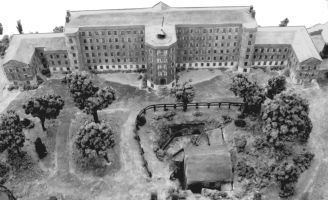
Since 1824, the mill had been managed by John Clayton, Oldknow's half-brother, and in 1828 Arkright (jun) allowed him to remain in the mill managers house, and take over the manufacturing. In those time 'mill' referred to the company that worked in the building not just the building itself. So John Clayton and Co took over the mill. In 1860 two steam engines and boilers were installed in a separate building to the north. The main mill-building was destroyed by fire in 1892, but many outbuildings survived. Excavation of one of these in 1921, a coach-house, revealed a cache of Oldknow's papers; and from these Unwin researched and published the book referred to below.
Parish apprentices
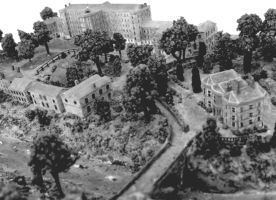
Oldknow was experienced at running spinning mills, and offered work to the few women living in the area, but many of his first workers were parish apprentices. Economically it made sense, on average an apprentice cost 4/0d a week to maintain while a mill hand cost 4/8d. In May 1791 he was boarding two boys at 4/6d a week. In November 1795 he made enquiries through a friend to the Parish of Clerkenwell for a supply of children. He was informed in December that 40 to 50 of mixed sexes were available, and in January 1796 he is told that 35 boys and 35 girls had been selected. The parish beadle would accompany them north. When news spread, he was offered other children by other parishes. The maximum number of apprentices was reached in 1797 to 1801. Material in the records suggest that apprentices coming out of time remained in Oldknow's service. Robert Blincoe confirmed that Oldknow was a humane employer and his apprentices were contented and healthy.
Architecture
This was a six-storey, 42 feet wide and 210 feet long mill with additional 3-storey wings making it 400 ft in all. The mill was built for Samuel Oldknow and used to spin coarse counts. It was originally driven by the Wellington water wheel. The River Goyt, and with it the then county boundary between Derbyshire and Cheshire was diverted and a weir built, the leat fed a millpond that in later times was named the Roman Lakes. This in turn fed a second mill pond along with water from reservoir in Linnet Clough. Supplementary power was provided by a second exterior wheel known as the Waterloo wheel. The Mill reached its peak production in 1804, when 10,080 spindles were operating and around 550 people were employed.
In a 1867 plan, Mellor Mill, was described as brick built and slated, consisting of main building seven stories high which included the attic with four rooms of 25 bays each, and three rooms of 49 bays. Each bay is 7 ft. 10in. There were separate waste and cotton rooms, warehousing, storerooms and a counting house.
Power
The Wellington Wheel, was located in a wheelpit in a basement below the central entrance to the mill. It was a breastshot wheel, 22 feet (6.7 m) in diameter and 17 feet (5.2 m) in width Water from the mill lodge on the southern elevation of the mill, fed the wheel via a leat that entered the mill at ground level.
The Waterloo wheel was built at a later date probably in 1815. Water exited the Wellington wheel pit to the exterior breastshot Waterloo wheel which was 22 feet (6.7 m) in diameter but narrower. Power was transmitted to the mill and outbuildings through a tunnel. As the tail race was lower than the River Goyt, at water went via a tunnel 600 metres (2,000 ft) further downstream to where which time the river had dropped sufficiently in height.
A further water wheel is known of that supplied power to stone built corn mill off the south western gable of the mill. Together the three wheels raised 120 H.P.
Two Steam Engines were added later, each of 20 (nominal) H.P. by Goodfellow, of Hyde.
Equipment
Originally water frames, then throstles. The Machinery comprises 23,000 throstle spindles by Wren & Hopkinson, with full complement of preparation machines by Parr, Curtis & Madely, of Manchester and a hoist by Hughes & Wren;
